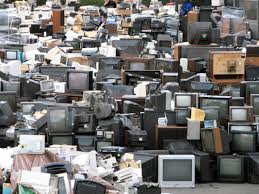As manufacturers continue meeting consumer demand for newer, more awe-inspiring electronics featuring the latest technology, the question remains what to do with the last generation of products that have lost their wow factor. With electronics at price points attainable by more consumers than ever – combined with our throw-away society – millions of tons of toxic electronics are discarded in landfills annually.

Robert Coolidge
President & CEO
While the federal government has yet to enact any e-recycling mandates, it has designated as “hazardous” various materials that make up electronic devices, such as CRTs. A hazardous designation makes these materials subject to special, more expensive and rigorous handling procedures under the federal Resource Conservation and Recovery Act (RCRA). To avoid or mitigate these regulations, electronics must be reused or recycled.
However, 25 states have implemented some type of regulation that governs the disposal of e-waste. According to the Environmental Protection Agency, state e-waste regulations can be stricter than the federal requirements. Some states enforce outright bans on certain electronics from being disposed in landfills, while others impose annual impact fees on manufacturers and/or require manufacturers and even retailers to assist in recycling efforts.
E-waste is inevitably going to become a larger and larger concern and focal point for legislation. Environmental activists will only get louder as the problem continues to grow. Although declaring a product “beyond economical repair” is all too common in electronics servicing today, that bar is likely to drop a lot lower in the future. Repairing a product even when the cost is more than replacing it may one day become a necessity due to high disposal fees and cumbersome regulations. Recycling electronic components to use in repairs will also naturally become more standard.
While many within the electronics supply chain have already taken aggressive steps to effectively limit e-waste impact and become green corporate citizens, we will never be able to let up on the gas. Extending the life of electronics through repair service or parts harvesting will most certainly be a more crucial mainstay of the industry in years to come.
But with Consumer Electronics repair shops closing because they can’t turn a profit or their owners are retiring, what does the future hold? The Consumer Electronics service industry outlook may not actually be as bleak as it appears, but it also may not be able to hang on long enough to see the tide turn.
If manufacturers don’t begin to better support their service networks today, they may be in for a tougher time dealing with end-of-life electronics later as e-waste regulations presumably tighten. As long as the next generation of electronics keeps flooding our markets, we’re going to need eco-friendly disposition of unwanted devices. Repairing, reusing or recycling for parts remain the most viable options to keep old electronics from becoming trash – and ample Consumer Electronics aftermarket support businesses will be needed to handle the continual influx.













Leave a Reply